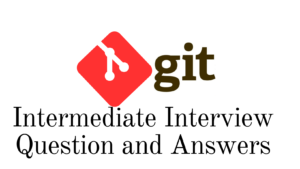A cover letter summarizes your qualifications and professional objectives. Specifically written cover letter for software engineer notifies the prospective employer or recruiter about the type of job you’re seeking for or the specific position you’re applying for in this way. It also gives them background information that will convince them to check your CV and consider you for a position.
- Introduction to cover letter for software engineers
- Understanding the job requirements
- Tailoring your cover letter to the company
- Showcasing your technical skills
- Emphasizing your soft skills
- Formatting your cover letter
- Avoiding common mistakes
- Following up after submitting your cover letter
- Using keywords and action verbs
- Providing evidence and examples
- Crafting a compelling introduction and conclusion
- Conclusion
Introduction to cover letter for software engineers
When it comes to landing a job as a software engineer, a well-crafted cover letter can make all the difference. A cover letter is your chance to showcase your skills and experiences, and convince the employer why you are the best fit for the job. However, many software engineers struggle with writing a compelling cover letter that grabs the reader’s attention and sets them apart from other candidates. In this blog post, we will share 5 top tips for writing a software engineer cover letter that will help you stand out in a crowded job market.
From customizing your cover letter to highlighting your technical and soft skills, we’ll cover everything you need to know to create a cover letter for software engineers that showcases your expertise and convinces the employer to invite you for an interview. Whether you’re a recent graduate or an experienced software engineer, these tips will help you create a cover letter that lands you your dream job.
Understanding the job requirements
Understanding the job requirements is a crucial step in writing an effective cover letter for software engineers. The job description will typically outline the skills, qualifications, and experience required for the position. To create a cover letter that stands out, it’s essential to analyze the job description carefully and tailor your letter to the specific requirements of the role.
One tip is to highlight the keywords and phrases used in the job description and incorporate them into your cover letter. This will help to demonstrate that you have read and understood the requirements of the role and are a good fit for the position.
Additionally, it’s important to research the company and understand their values and mission. This will help you to align your cover letter with the company’s goals and show the employer that you are genuinely interested in the position.
By understanding the job requirements and tailoring your cover letter to the specific needs of the role, you will increase your chances of standing out from other candidates and being invited for an interview. A cover letter that is customized to the job description and the company’s values and mission will demonstrate that you are a thoughtful and qualified candidate who is committed to contributing to the organization’s success.
Tailoring your cover letter to the company
Another important step in writing a cover letter for software engineer that stands out from the crowd is to tailor it to the organisation. Employers want to see that you have done your homework and understand their company’s vision, values, and culture. By personalising your cover letter, you indicate that you are a good fit for the firm and that you are really interested in the position.
One technique to personalise your cover letter to the firm is to study and highlight their products or services in your message. This will show that you understand the company’s business and are excited about the work they accomplish.
You can also emphasize important experiences and talents that meet the company’s requirements.
For example, if the company values teamwork and collaboration, you could mention a successful team project you worked on in your cover letter.
It’s also important to use a professional tone and language that matches the company’s culture. For instance, if the company has a relaxed and informal culture, you may use a more casual tone in your cover letter.
By tailoring your cover letter to the company, you demonstrate that you have done your research and are a good fit for the organization. This will increase your chances of getting noticed and being invited for an interview.
Showcasing your technical skills
Putting your technical talents on display is an important component of writing a successful cover letter for software engineer. Companies want to see that you have the requisite technical abilities and expertise to do the job. Yet, it is critical to demonstrate your technical expertise in a clear and succinct manner, without employing unnecessary jargon that may confuse the reader.
One recommendation is to concentrate on the most important technical abilities for the position and offer detailed instances of how you have used them in past work experiences. For example, if the position demands familiarity with a certain programming language or software tool, you may share instances of how you have utilized these tools to solve issues or build solutions.
Also, you must demonstrate your capacity to learn and adapt to new technology. You might highlight any training or qualifications you have received, as well as your past experience dealing with new technology.
Include links to your online portfolio or GitHub page as another approach to demonstrate your technological expertise. This will allow the company to examine examples of your work and more completely analyze your technical talents.
Showcasing your technical skills in a software engineer cover letter is crucial, but it’s essential to do so in a way that is clear and understandable to the reader. Providing specific examples and demonstrating your ability to learn and adapt to new technologies will help you stand out from other candidates and increase your chances of getting noticed by the employer.
Emphasizing your soft skills
Emphasizing your soft skills is another important aspect of creating a cover letter for software engineer that stands out. Soft skills refer to your interpersonal and communication abilities, problem-solving skills, teamwork, and other qualities that are not necessarily technical in nature but are critical for success in any job.
You can emphasize the soft skills that are most relevant to the job and provide examples of how you have demonstrated these skills in your previous work experience. For example, if the job requires excellent communication skills, you could discuss how you effectively communicate technical information to non-technical stakeholders or how you collaborated with cross-functional teams to deliver successful projects.
It’s also essential to highlight your ability to learn quickly, be adaptable, and work well under pressure. In the software engineering field, new technologies and methodologies are emerging rapidly, and being able to adapt to change and learn quickly is crucial. You can also demonstrate your soft skills is to provide references or testimonials from previous employers or colleagues. These references can speak to your communication, collaboration, and problem-solving abilities and provide additional evidence of your qualifications for the job.
By providing specific examples of how you have demonstrated skills like your ability to work well with others, adapt to change, and solve complex problems in your previous work experience, you will increase your chances of standing out from other candidates and being invited for an interview.
Formatting your cover letter
Formatting your cover letter is a crucial step in creating a professional-looking and well-organized cover letter for software engineer. The format of your cover letter should be clean and easy to read, with a professional font and a clear layout.
Use a standard business letter format, including a header with your name and contact information, the date, and the employer’s contact information. The body of your cover letter should be broken up into several paragraphs, with a clear introduction, body, and conclusion.
It’s also essential to keep your cover letter concise and to the point. Hiring managers often have to read through many applications, so it’s crucial to make your cover letter as easy to read and understand as possible. Aim to keep your cover letter to no more than one page, using bullet points or short paragraphs to convey your key points.
It’s essential to proofread your cover letter carefully for any spelling or grammatical errors. You could also ask a friend or colleague to review your cover letter for clarity and organization.
Also, it’s important to save your cover letter in a standard format, such as a PDF or Microsoft Word document. This will ensure that the employer can easily open and read your cover letter.
Formatting your software engineer cover letter in a clear, concise, and professional manner is essential to making a good impression on the employer and increasing your chances of being invited for an interview.
Avoiding common mistakes
Avoiding common mistakes is crucial when creating a cover letter for software engineer that stands out. Here are some tips on what to avoid:
- Repeating your resume: Your cover letter should complement your resume, not repeat it. Avoid regurgitating your resume by highlighting different achievements and experiences that aren’t mentioned in your resume.
- Using generic phrases: Avoid using generic phrases that don’t add value to your cover letter, such as “I am a hard worker” or “I am a team player.” Instead, use specific examples that demonstrate your skills and achievements.
- Focusing too much on yourself: While it’s important to showcase your skills and experience, remember that the cover letter is ultimately about how you can help the company. Make sure to highlight how you can add value to the organization and contribute to their goals.
- Forgetting to customize: Avoid sending a generic cover letter that doesn’t speak to the specific job you are applying for. Customize your cover letter to the job description and the company’s needs to demonstrate that you have done your research and are genuinely interested in the position.
- Neglecting to proofread: Spelling and grammar mistakes can immediately turn off a hiring manager. Always proofread your cover letter before sending it, and consider asking a friend or colleague to review it as well.
By avoiding these common mistakes, you can ensure that your software engineer cover letter is professional, engaging, and stands out from the competition.
Following up after submitting your cover letter
Following up on your software engineer cover letter submission is an important step in displaying your excitement and interest in the role. You may boost your chances of distinguishing out from other candidates and being accepted for an interview by utilizing a professional tone and offering additional information. Here are some pointers on how to efficiently follow up:
- Allow a week for the company to assess your application before following up. Follow up within a week after submitting your application.
- Send an email to the following address: Write the employer a quick email thanking them for taking the time to evaluate your application and expressing your ongoing interest in the position. Maintain a professional tone and keep the email brief.
- Please include any other information: Use the follow-up email to give any extra information that is pertinent to the position or the organisation. This might be a link to a project you’ve worked on or a recommendation from a previous employer.
- Be persistent but not pushy: It is critical to be persistent in your follow-up attempts while avoiding appearing forceful or hostile. Follow up once or twice, but don’t email or contact the employer continually.
- Don’t be discouraged if you don’t hear back from the employer after following up. Continue to apply for additional employment, network, and develop your talents.
Using keywords and action verbs
Using keywords and action verbs in your software engineer cover letter can help you stand out from other applicants, demonstrate your relevant skills and experience and stand out from other applicants. Make sure to be specific and avoid overusing buzzwords, while keeping your cover letter concise and easy to read. Here are some tips on how to effectively use keywords and action verbs in your cover letter:
- Use relevant keywords: Look at the job description and identify keywords and phrases that the employer is looking for. Use these keywords throughout your cover letter to show that you have the skills and experience they are looking for.
- Use action verbs: Action verbs help to make your cover letter more engaging and dynamic. Use strong action verbs to describe your achievements and responsibilities, such as “developed,” “implemented,” or “designed.”
- Be specific: Use specific examples and accomplishments to demonstrate your skills and experience. For example, instead of saying “I have experience with coding,” say “I successfully coded a complex software application that increased efficiency by 20%.”
- Avoid overusing buzzwords: While it’s important to use relevant keywords, avoid overusing buzzwords or technical jargon that may not be familiar to the employer. Use these terms sparingly and only where appropriate.
- Keep it concise: While it’s important to use keywords and action verbs, make sure your cover letter is still concise and easy to read. Use bullet points or short paragraphs to highlight your achievements and experience.
Providing evidence and examples
Providing evidence and examples in your cover letter for software engineer is a great way to demonstrate your skills and experience to potential employers. Here are some tips on how to effectively provide evidence and examples:
- Highlight your achievements: Instead of simply listing your job responsibilities, highlight specific achievements and accomplishments. For example, instead of saying “I worked on a software development project,” say “I successfully led a team of developers in creating a software application that increased sales by 25%.”
- Use metrics and data: Use metrics and data to quantify your achievements and demonstrate the impact of your work. For example, use data to show how your work improved efficiency, reduced costs, or increased revenue.
- Provide specific examples: Use specific examples to demonstrate your skills and experience. For example, provide a link to a project you worked on or describe how you solved a particularly challenging problem.
- Use the STAR method: When describing your achievements, use the STAR (Situation, Task, Action, Result) method. Describe the situation or problem you faced, the task you were assigned, the action you took, and the result or outcome.
- Align your examples with the job requirements: When providing examples, make sure they align with the job requirements and demonstrate the skills and experience the employer is looking for.
By providing evidence and examples in your software engineer cover letter, you can demonstrate your skills and experience and show potential employers why you are the best candidate for the job. Use metrics, specific examples, and the STAR method to effectively showcase your achievements and align them with the job requirements.
Crafting a compelling introduction and conclusion
Crafting a compelling introduction and conclusion is crucial for your software engineer cover letter to stand out to potential employers. By doing this you can grab the reader’s attention and make a strong case for why you are the best candidate for the job. Use language that is engaging and captivating, highlight your unique value proposition, and end with a strong call to action that encourages the reader to take the next step. Here are some tips on how to effectively craft an introduction and conclusion:
- Introduction: Start with a strong opening statement that grabs the reader’s attention and sets the tone for the rest of the letter. For example, you could start with a statement about your passion for software engineering or a brief overview of your experience and skills.
- Hook the reader: Make sure your introduction hooks the reader and encourages them to keep reading. Use language that is engaging and captivating, and show enthusiasm for the job and the company.
- Highlight your value proposition: Use the introduction to highlight your unique value proposition and explain why you are the best candidate for the job. Focus on your relevant skills, experience, and accomplishments.
- Conclusion: End your cover letter with a strong conclusion that summarizes your key points and emphasizes your interest in the job. Use the conclusion to reiterate your enthusiasm for the position and the company and express your eagerness to contribute.
- Call to action: End with a call to action that encourages the reader to take the next step, such as scheduling an interview or contacting you for more information.
Conclusion
In conclusion, writing a strong cover letter for software engineer is a crucial step in landing your dream job in the tech industry. By following these 10 top tips, Understanding the job requirements, Tailoring your cover letter to the company, Showcasing your technical skills, Emphasizing your soft skills, Formatting your cover letter, Avoiding common mistakes, Following up after submitting your cover letter, Using keywords and action verbs, Providing evidence and examples and Crafting a compelling introduction and conclusion, you can create a compelling and persuasive cover letter that sets you apart from other applicants.
Remember to also provide evidence and examples, use keywords and action verbs, and craft a compelling introduction and conclusion that highlights your unique value proposition and encourages the reader to take the next step. With these tips, you can increase your chances of landing a job interview and ultimately, your dream job as a software engineer.
Looking to land your dream job but struggling to get the interview calls you deserve?
Look no further than our comprehensive eBook, “How to Get More Interview Calls?”




